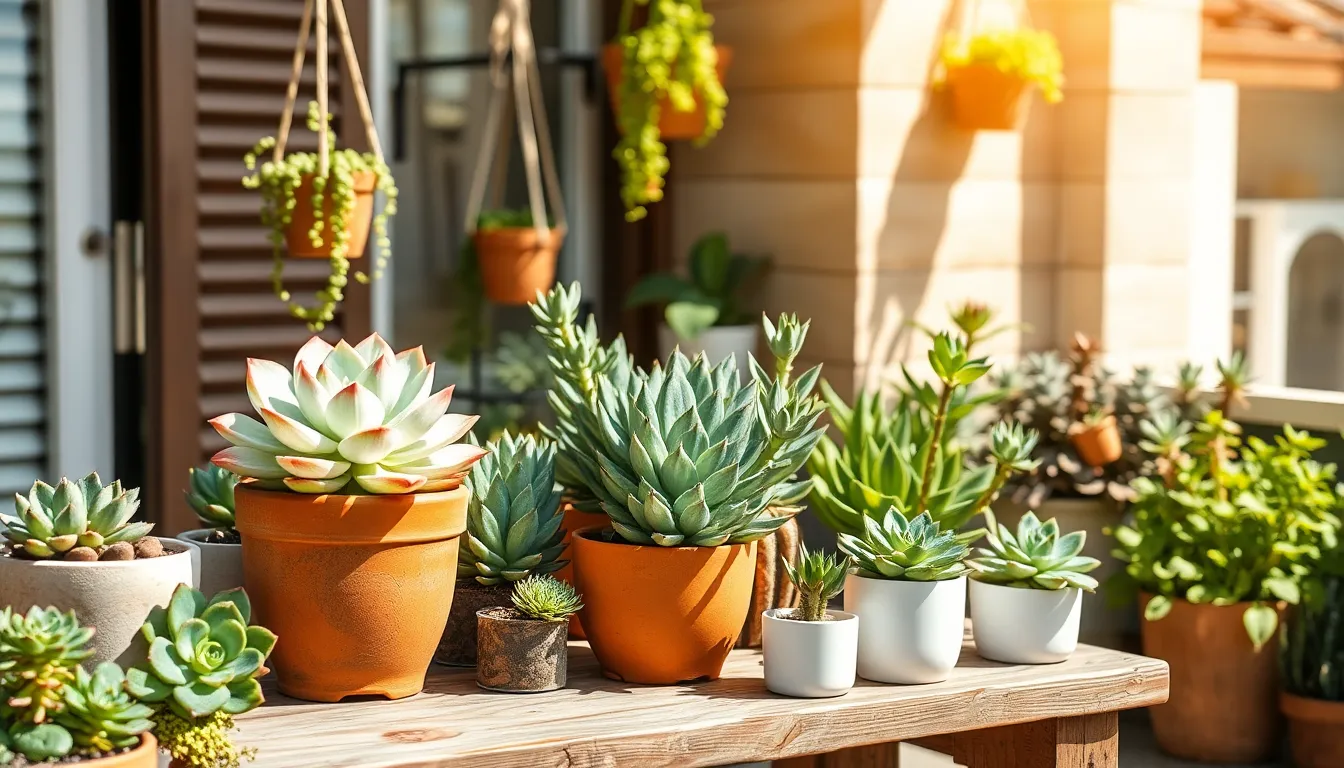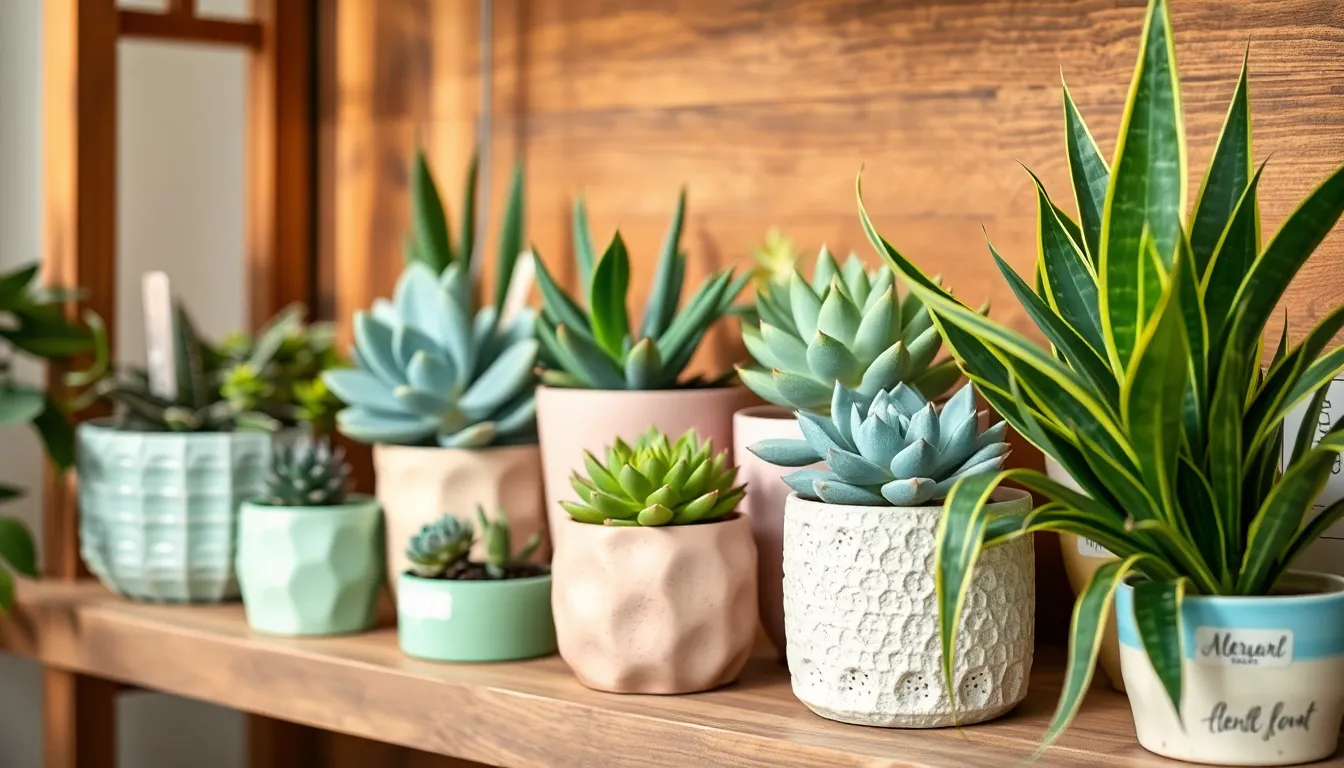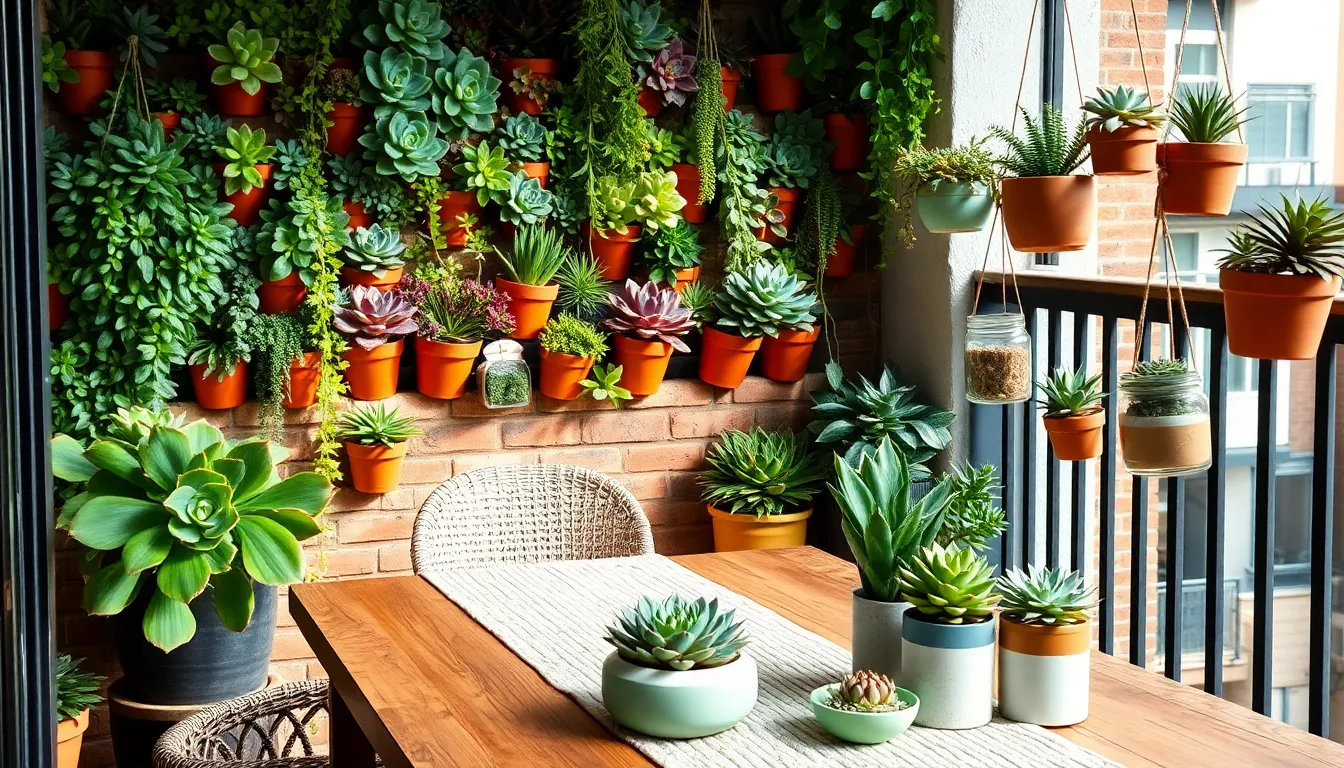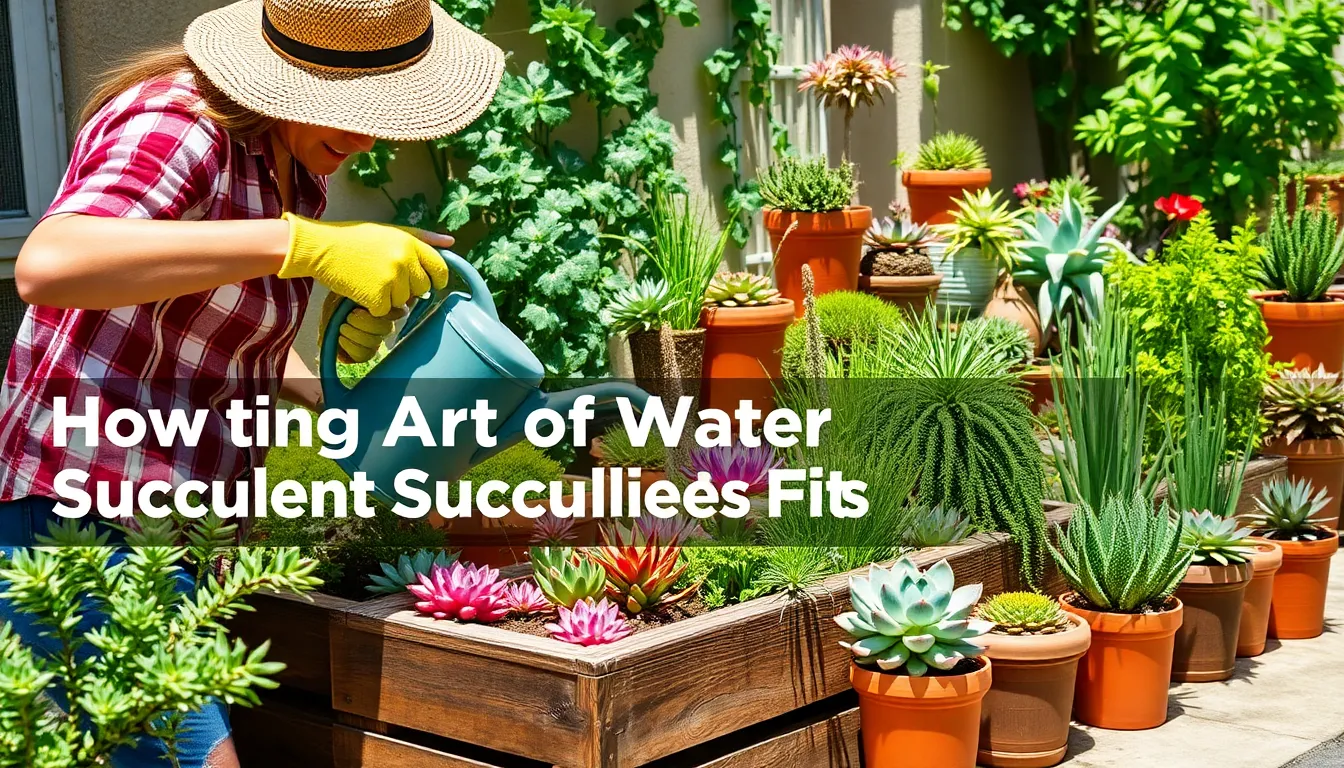In the realm of container gardening, succulents stand as the delightful, low-maintenance gems that can transform any space into a vibrant oasis. Whether you’re a seasoned gardener with a green thumb or a curious beginner just dipping your fingers into the soil, growing succulents in containers offers a rewarding experience that marries beauty with simplicity. With their striking forms and diverse colors, succulents bring a touch of nature’s artistry right to your doorstep, making them an ideal choice for those looking to cultivate a garden with personality and ease.
Understanding the nuances of succulent care is key, and this guide is here to illuminate the path to success. Dive in to discover the secrets of selecting the perfect containers, mastering watering techniques, and creating the ideal soil mix that ensures your succulents thrive. From choosing the right species for your environment to troubleshooting common issues, we’ll equip you with the knowledge to nurture these resilient plants with confidence. Whether you’re looking to brighten a windowsill or create a stunning outdoor arrangement, growing succulents in containers is a journey filled with creativity and satisfaction.
Select Suitable Succulent Varieties
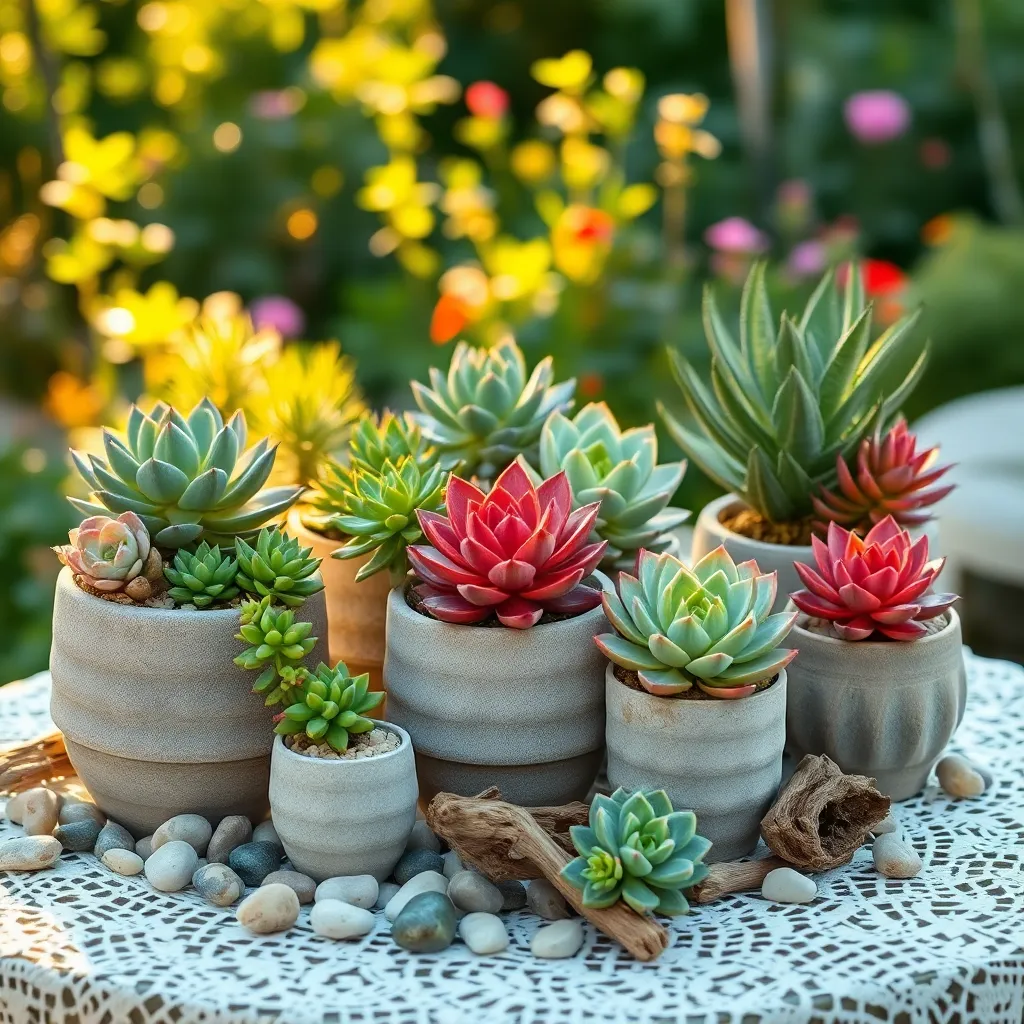
When selecting succulents for container gardening, start with varieties like Jade Plant (Crassula ovata) and Echeveria, which are beginner-friendly and thrive in most indoor environments. These plants prefer bright, indirect sunlight and should be watered sparingly, allowing the soil to dry out completely between waterings.
For those looking to add a pop of color, consider the Flaming Katy (Kalanchoe blossfeldiana), which produces vibrant flowers and requires minimal care. It’s important to use a well-draining soil mix, such as a commercial cactus mix, to ensure roots do not sit in water.
Experienced gardeners might enjoy trying Haworthia or Agave, which offer interesting textures and shapes, adding visual interest to your collection. These varieties need strong light and should only be watered when the top inch of soil feels dry to the touch.
To maximize your success with container succulents, make sure to choose pots with drainage holes to prevent root rot. Additionally, consider top-dressing the soil with a layer of pebbles or small stones to enhance aesthetics and maintain soil moisture levels.
Choose Well-Draining Containers
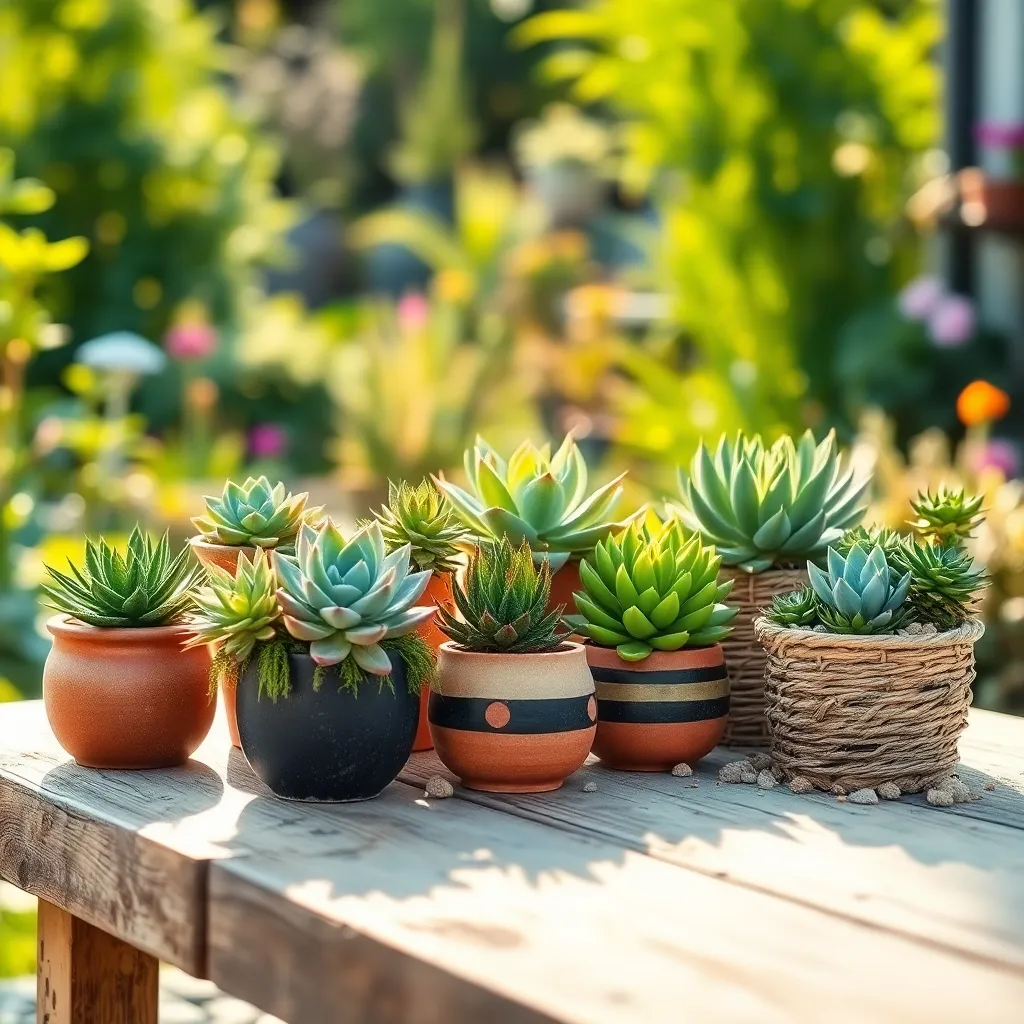
Choosing well-draining containers is crucial for the health and longevity of your succulents. Succulents are prone to root rot if left in waterlogged soil, so ensure your container has adequate drainage holes at the bottom.
When selecting a container, consider materials like terracotta or ceramic, which naturally allow for better airflow. These materials help wick away excess moisture from the soil, reducing the risk of overwatering, which is a common mistake among beginners.
For those with a flair for design, incorporating containers with built-in drainage trays can be both practical and stylish. These trays catch excess water, allowing it to evaporate rather than collect and cause potential problems for your plants.
Advanced gardeners might experiment with creating a drainage layer at the bottom of their containers. Adding a layer of small rocks or gravel can enhance drainage, though it’s important to remember that this shouldn’t replace proper container holes.
Prepare the Potting Mix
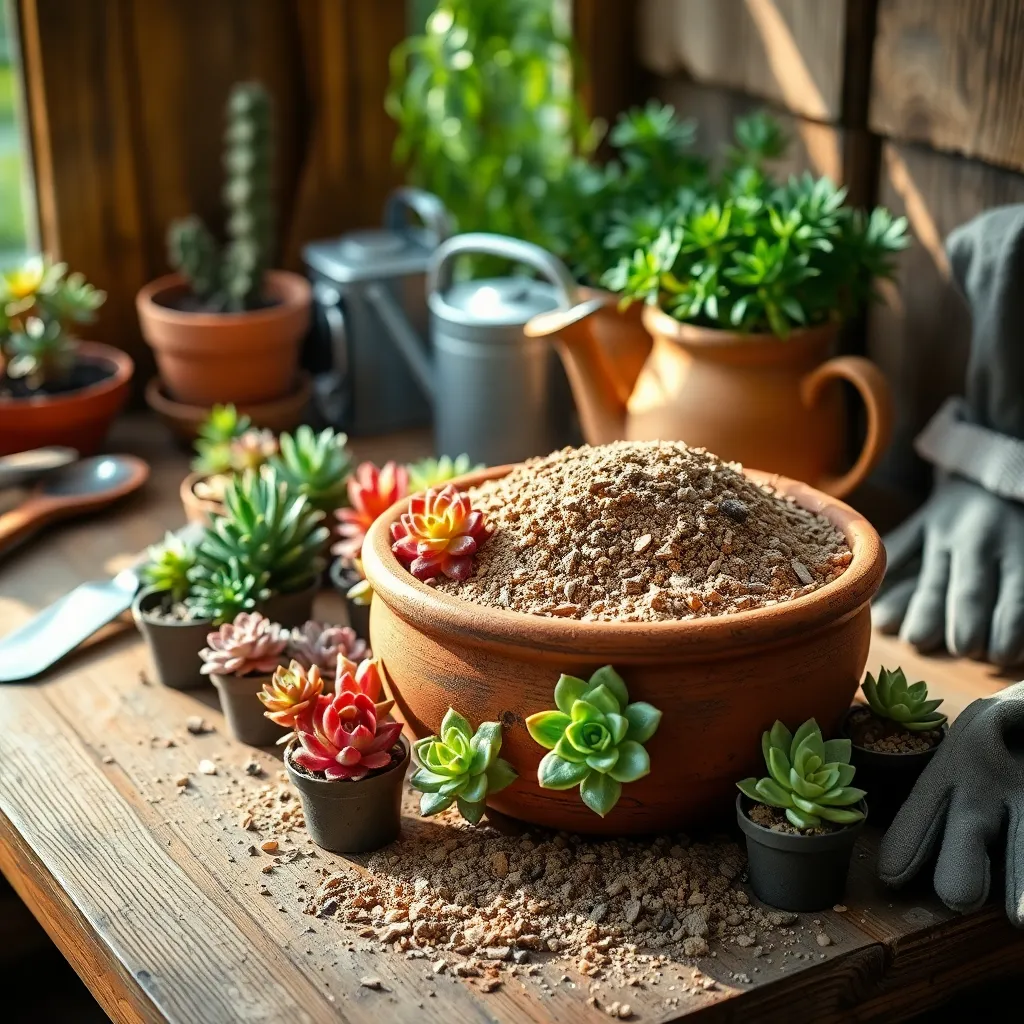
When preparing the potting mix for succulents, it’s essential to focus on creating a well-draining environment. Succulents are prone to root rot if their roots sit in water, so a mix that encourages fast drainage is crucial.
A basic potting mix for succulents should consist of equal parts potting soil, coarse sand, and perlite or pumice. Potting soil provides nutrients, while the sand and perlite ensure proper drainage and aeration.
For those looking to enhance their mix, consider adding small amounts of crushed granite or fine gravel. These components help improve drainage further and can also add a decorative touch to the soil surface.
As a practical tip, avoid using garden soil as it tends to compact and retain too much moisture. Instead, stick with the recommended ingredients to create a mix that supports the unique needs of succulents.
If you’re an advanced gardener, you might experiment with varying the proportions to suit specific succulent species. Some succulents thrive with a bit more organic matter, while others prefer an even sandier mix.
Plant Succulents Correctly
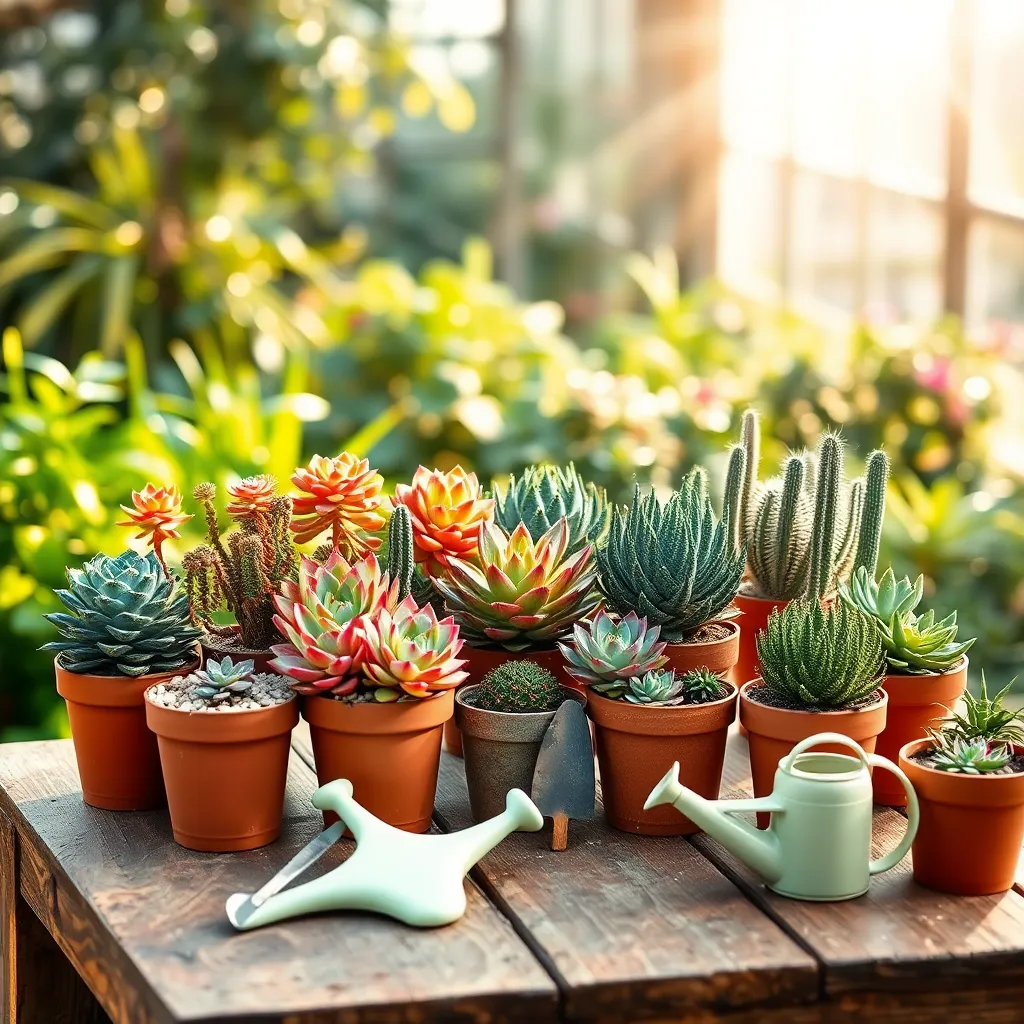
After preparing the potting mix, it’s time to place your succulents in their new home. Ensure the container has a drainage hole to prevent water from pooling at the bottom, which can cause root rot.
Start by gently removing the succulent from its nursery pot. Be careful not to damage the roots, as succulents are sensitive to root disturbance.
Next, create a small hole in the potting mix where you want to place the plant. Position the succulent so that its roots are fully covered, and the base of the plant sits just above the soil line.
Firmly press the soil around the roots to stabilize the plant. This helps the succulent establish itself in its new environment.
After planting, allow the succulent to acclimate to its new setting before watering. Wait about a week before giving it a drink to prevent shock and encourage root growth.
For advanced care, consider top-dressing the soil with rocks or gravel. This not only keeps the soil in place but also enhances the aesthetic appeal of your succulent arrangement.
Ensure Proper Light Conditions
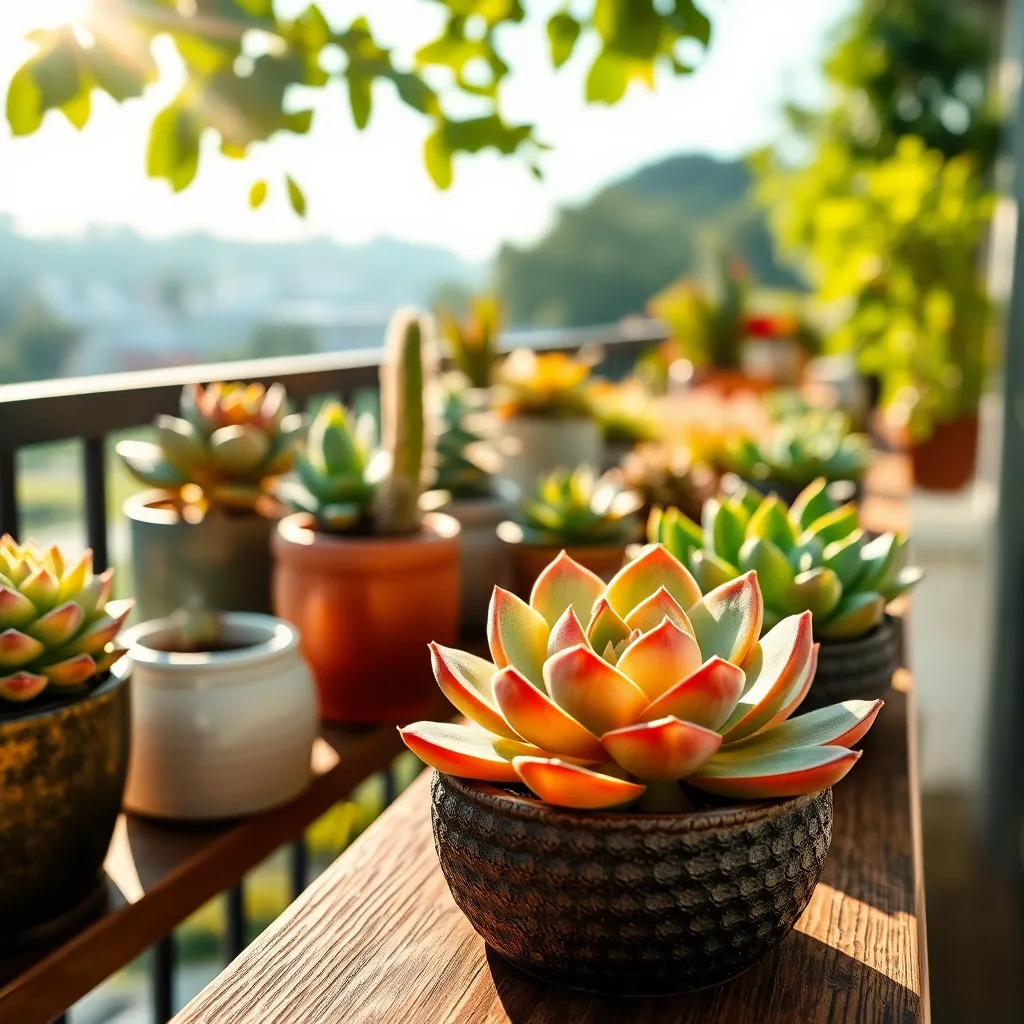
Succulents thrive when they receive the right amount of light, making it crucial to place your containers in an optimal location. For most succulents, aim for at least six hours of bright, indirect sunlight daily to encourage healthy growth.
Consider rotating your succulent containers every few days to ensure even light exposure, which helps prevent lopsided growth. If natural sunlight is insufficient, especially during winter months, supplement with a grow light to maintain proper light levels.
Be mindful of the specific light needs of your succulent species, as some may prefer a bit of shade to avoid leaf burn. To test if your succulents are getting too much sunlight, check for signs like scorched or discolored leaves, and adjust their position accordingly.
For indoor succulents, placing containers near a south or east-facing window usually provides optimal light conditions. However, if this isn’t possible, consider placing your succulents under an adjustable LED grow light, ensuring they receive enough light to flourish.
Conclusion: Growing Success with These Plants
In nurturing both your succulents and relationships, five key concepts shine through: understanding the unique needs of each, providing consistent care, allowing room for growth, addressing issues before they escalate, and celebrating small victories. Just as succulents thrive with the right balance of light, water, and soil, relationships flourish with attention, communication, and mutual respect.
As an actionable next step, take a moment today to identify one area in your relationship that could use a little extra care, whether it’s setting aside time for meaningful conversation or planning a shared activity. Small, intentional efforts can yield beautiful growth.
Remember, relationships, like succulents, require ongoing nurturing to truly thrive. Be sure to bookmark this article so you can revisit these tips whenever you need a reminder or a bit of encouragement.
Looking ahead, know that your commitment to nurturing your relationship will plant the seeds for lasting success. Embrace this journey with patience and positivity, and watch your connections grow stronger and more resilient with each passing day. Your relationship, much like a well-tended garden, is capable of blossoming beautifully.

